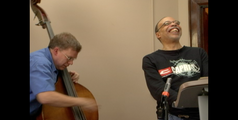When Did Jazz Go Straight? A Queer Question for Jazz Studies
Sherrie Tucker
Published: 2008-12-04
Scholars in Jazz Studies who seek to analyze sexuality in meaningful ways struggle against a historical legacy of writing saturated by racist and colonialist desires manifest in primitivism, romanticism, and hyper-sexualization. This baggage does not go away when scholars turn their focus to "hidden histories of queer jazz musicians." This article argues for another tack, to analyze heterosexual norms as social constructions; to understand intersectional analysis as a network of actively changing and contingent categories, and to attend to dynamics of "queering" and "straightening" in historically and culturally specific moments. This article poses the question--"when did jazz go straight?''--not as a literal question that can be answered once and for all, but as a candidate for inclusion in a new and improved "sexuality" compartment of the Jazz Studies toolkit.
Available Files
-
When_Did_Jazz_Go_Straight.pdf
Download


